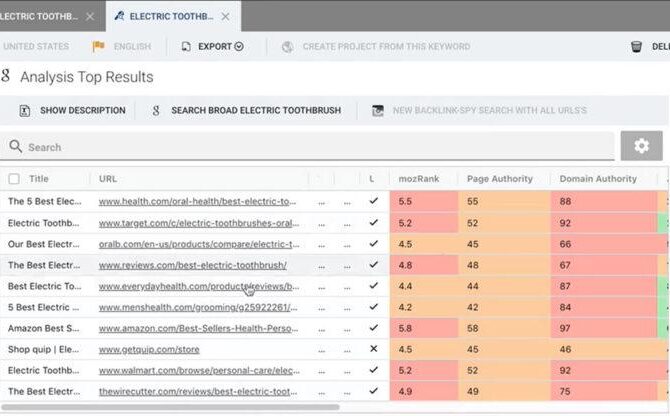decoding the Importance of Score Differential in Golf Handicapping
In the world of golf, grasping the nuances of a player’s handicap is crucial for both competitive and casual play.Central to this system is the concept of score differential, which serves as a vital indicator of how a golfer’s performance compares to the difficulty level of various courses. This metric not only determines a player’s Handicap Index but also ensures equitable competition among golfers with differing skill levels. By delving into score differentials, we can uncover their importent influence on gameplay strategies and overall enhancement.
The significance of Score Differential in Golf Handicapping
The foundation of golf handicapping lies in understanding Score Differential, an essential statistic that sheds light on how well a golfer performs relative to course ratings. This figure represents the gap between a player’s score and the course’s difficulty level, taking into account various environmental factors as well. For instance,scoring an 80 on a challenging course may be more impressive than scoring 77 on an easier one. Such comparisons allow for fair evaluations among players regardless of where they compete.
The calculation for Score Differential follows this formula:
| Your score | Course Rating | Slope (Standard: 113) | Score Differential |
|---|---|---|---|
| 80 | 72 | 113 | 7.0 |
| 77 | 70 | 113 | 8.36 |
This formula standardizes scores across different courses and conditions, allowing each calculatedscore Differential </strongto contribute meaningfully to a golfer's Handicap Index—crucial for maintaining fairness during competitions.
A solid grasp of your Score Differential not only helps you track your progress but also informs strategic decisions about which courses to play and how best to approach them based on personal strengths and weaknesses.
The Impact of Score Differentials on Course Performance Evaluation
the role that score differential plays is pivotal when golfers assess their performance against varying challenges presented by different courses. By quantifying scores relative to course ratings, players gain clearer insights into their capabilities.This understanding allows golfers to pinpoint strengths and weaknesses specific to certain layouts.
An analysis reveals how performance varies across diverse types—whether facing intricate hazards or simpler designs—highlighting factors like weather conditions or individual skill levels that affect outcomes substantially.
Tactics for Maximizing Your Handicap via Strategic Analysis
A thorough understanding and application of your score differential are vital for optimizing your golf handicap effectively.Each round generates its own differential based upon your Adjusted Gross Score (AGS) compared against course difficulty metrics such as rating and slope.
By closely examining these differentials, you can better understand where you stand regarding skill level.
- Acknowledge consistency across various courses;
- Delineate personal strengths versus areas needing improvement;
- Create achievable performance goals based upon data-driven insights;
- Pursue comprehensive management strategies tailored specifically around unique characteristics found within each respective venue;
- If long drives are advantageous while short game precision lacks finesse; navigate hazards strategically positioning yourself favorably towards easier approach shots!
Lastly , remain adaptable by continuously refining shot selection . A strategic choice could transform potential bogeys into pars ultimately impacting final scores positively!
<td Assess risk associated with hitting hazards . Higher risks often lead towards elevated final tallies !
<td likelihood affects successful execution chances . The significance behind understanding one’s own unique metrics cannot be overstated! The ability accurately gauge skills leads directly toward improved performances resulting from informed decision-making processes throughout every round played!
Unlocking Your Golf Potential: How Score Differential Shapes Your Handicap
Meta Title: unlock Your Golf Potential with Score Differential & Handicap Strategies
Meta Description: Discover how score differential shapes your golf handicap. Unlock performance tips, benefits, and practical strategies to enhance your game.
Understanding Score Differential
Score differential is a critical concept in determining a golfer’s handicap. It reflects the relationship between a player’s score and the course rating, which provides an objective measure of difficulty.
What is Score Differential?
- Definition: The score differential is calculated using the formula:
[[[[
text{Score Differential} = frac{(text{Score} – text{Course Rating}) times 113}{text{Slope Rating}}
]
- Course Rating: The expected score for a scratch golfer (a golfer with a zero handicap).
- Slope Rating: A measure of the difficulty of a course for a bogey golfer compared to a scratch golfer.
Importance of Score Differential
- Fair Assessment: It allows golfers of different abilities to compete fairly.
- Baseline for handicap: Your handicap index is persistent by averaging your best score differentials.
- Encouragement for Improvement: Tracking score differentials motivates players to improve their scores and, consequently, their handicaps.
How to Calculate Your Score Differential
To calculate your score differential, follow these steps:
- Obtain Your Score: Record your total score for a round.
- Find course ratings: Check the course rating and slope rating of the course you played.
- Use the Formula: plug the values into the score differential formula mentioned above.
Example Calculation
| Score | Course Rating | slope Rating | Score Differential |
|———–|——————-|——————-|————————-|
| 85 | 72 | 130 | (frac{(85 - 72) times 113}{130} = 9.06) |
Establishing Your Handicap Index
The handicap index is a reflection of your potential ability,derived from your score differentials.
steps to Determine Your Handicap Index
- Collect Scores: Record at least 20 rounds of golf.
- Calculate Score Differentials: Use the above formula for each round.
- Identify Best Differentials: Select the lowest score differentials (usually the lowest 10 out of your best 20 rounds).
- Calculate Average: Average these best differentials.
- Multiply by 0.96: This final figure is your official handicap index.
Example of Handicap Calculation
| Score Differential | Best 10 Differential |
|————————-|—————————|
| 9.06 | 9.5 |
| 10.20 | 10.0 |
| 7.85 | 8.0 |
| 11.45 | 9.0 |
| 6.70 | 7.5 |
- Average of Best 10: (9.06 + 10.20 + 7.85 + 11.45 + 6.70) / 5 = 9.45
- Final Handicap Index: ( 9.45 times 0.96 = 9.07)
Benefits of Understanding Score Differential
- Identify Strengths and Weaknesses:
- Analyzing score differentials helps pinpoint specific areas that need improvement (e.g., putting, driving distance).
- set Realistic Goals:
– Knowing your score differential allows you to set achievable performance goals.
- Track Progress:
– Regularly updating your score differentials can visualize improvement over time.
Practical Tips for Improving Your Score Differential
- Focus on Course Management:
– Understand the layout and make strategic decisions on shot selection to avoid high scores.
- Practice Short Game Skills:
– A notable portion of strokes can be saved in putting and chipping; practice these areas diligently.
- Utilize Technology:
- Use golf apps and GPS devices to assess your performance metrics effectively.
- Play Different Courses:
– Challenge yourself on various course types to adapt to different playing conditions.
- Mental game strategies:
– Work on your mental approach by practicing visualization and concentration techniques.
Case Studies: Success Stories of Improved Score Differentials
Case Study 1: The Weekend Warrior
- Background: John, a 15-handicap golfer, focused on improving his short game.
- Strategy Implemented: John practiced chipping and putting drills for 30 minutes daily.
- Results: his score differentials improved from 10.5 to 8.0 over six months, lowering his handicap to 12.
Case Study 2: The Competitive Golfer
- Background: Sarah, a 10-handicap golfer, aimed to reach single digits.
- Strategy Implemented: she analyzed round data using a golf app and focused on her course management.
- Results: By understanding her weaknesses, Sarah lowered her score differential from 9.0 to 7.5, achieving a handicap of 9.
First-Hand Experiences: Golfer Testimonials
- Mark (Low 20s Handicap):
“Using score differentials made me realize where I was losing strokes. Focusing on my long game has been a game changer.”
- Lisa (5 Handicap):
“Tracking my score differentials has helped me aim for specific goals every round. It keeps me motivated and competitive.”
Conclusion
Understanding how score differential shapes your golf handicap is crucial for any golfer looking to improve. By embracing the power of score differentials, you unlock the potential for significant enhancements in your game. Whether you’re aiming for a better handicap or simply looking to lower your scores,knowledge and strategic practice are key to success on the course.
You might be interested in …
Fitzpatrick out of Olympic golf with thumb injury
Fitzpatrick Out of Olympic Golf with Thumb Injury
Olympic golf has been dealt another blow with the withdrawal of Matthew Fitzpatrick from the Tokyo Games due to a thumb injury.
The Englishman, who won the 2016 Olympic silver medal, aggravated an existing thumb issue during the Scottish Open last week. He withdrew from the event after the third round and has now made the decision to pull out of the Olympics to focus on his recovery.
Fitzpatrick’s withdrawal is a major disappointment for Team GB, which is already without world number one Rory McIlroy. The 27-year-old was expected to be one of the team’s key performers, and his absence will leave a significant hole in the lineup.
It is not yet clear how long Fitzpatrick will be out of action, but he is hopeful that he can return to competition in time for the FedEx Cup playoffs.
For Phil Mickelson and the U.S. Open, perhaps not every love story needs a perfect ending
Phil Mickelson’s quest for a U.S. Open victory continues to elude him, making the 2023 edition at The Los Angeles Country Club effectively his last chance at fulfilling his career Grand Slam.
Greg Norman Takes the Helm: Joining the Board for the Exciting 2032 Games!
The highly anticipated “32 Games” event is on the horizon for 2032, and in an exciting development, Greg Norman, the dynamic CEO of LIV Golf Investments, is poised to join the organizing board. With a wealth of experience in both golf and business, Norman is set to make a significant impact. Rumors are swirling that his involvement signals a strategic move to attract more globally recognized figures to the 2032 Games Organizing Committee
Selecting Courses Wisely based On Your Skill Level:
| Course Feature | Effect On Your Overall Performance |
|---|---|
| Course Rating | Higher ratings indicate increased challenge; thus possibly raising your overall differential. |
| Slope | A steeper slope may pose greater challenges leading less skilled players towards higher differentials. |






